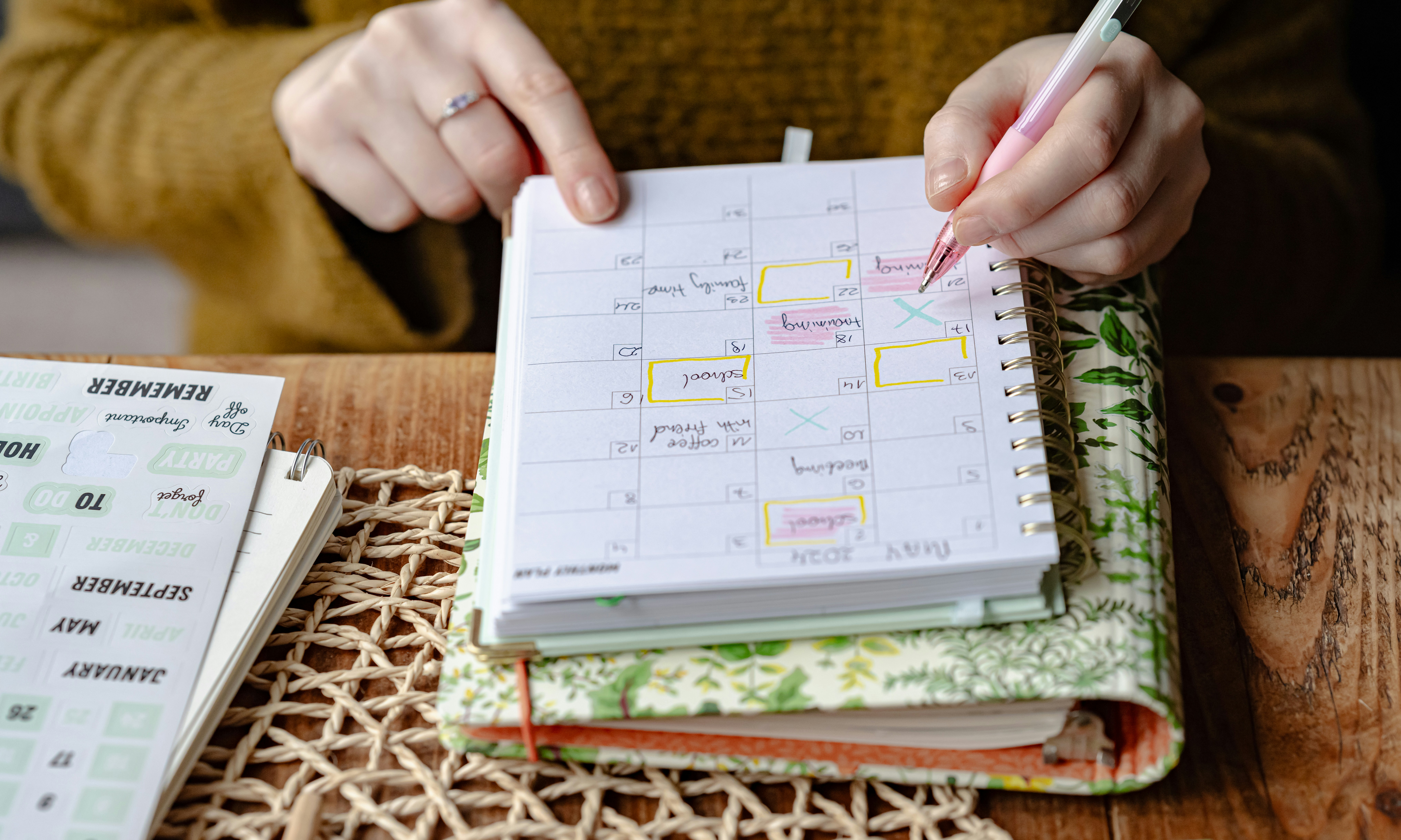
How to Create a Shared Family Calendar to Be Organized Together
Being a frazzled parent has an endless to-do list of appointments, events, and responsibilities. Juggling soccer practice, doctor’s appointments, and dinner at home can make staying organized a full-time job. That’s where a shared family calendar can be a sanity-saver. By putting everyone’s schedules in one place, a shared calendar is the ultimate planning tool for a more productive, less chaotic life.
Whether you’re a tech-savvy family or prefer the simplicity of a wall calendar, setting up this system can make your household more efficient and foster better communication. Let’s explore how to create a shared calendar and tips for keeping it running smoothly.
Why Use a Shared Family Calendar?
A shared calendar isn’t just about convenience—it’s about fostering harmony and cutting down on the chaos. Here’s how it helps:
- Improved Communication: Everyone knows what’s going on without constant reminders.
- No More Conflicting Schedules: Double booking? Not with one calendar to check!
- Shared Responsibility: Kids are more apt to take responsibility for their appointments (and maybe even learn something about time management as well).
- Less Stress, More Quality Time Together: With a clear view of how your week is going to shape up, you can spend more time actually enjoying the good times together.
Choosing the Right Type of Calendar for Your Household
Each family is different, and the right type of calendar is the one that works for everyone. Among the most popular ones to consider are:
| Type | Pros | Cons |
| Digital Calendar | Synchronizes across devices, easy to change, customizable reminders | Requires internet and technical knowledge |
| Wall Calendar | Always visible, doesn’t require devices, least expensive choice | Hard to keep current while away from home |
| Whiteboard Calendar | Flexible, reusable, and can have individualized notes or pictures | Requires constant manual updates |
For digital solutions, there are alternatives like Google Calendar, Cozi, or even Apple Calendar that are highly suggested. They possess advanced features like color-coded events, shared access, and smartphone support.
Step-by-step Guide to Setting Up Your Shared Family Calendar
Step 1. Choose Your Platform
Choose the calendar that suits your family best. Electronic calendars are good for tech-savvy parents. For little kids, a visual wall calendar could be the solution.
Step 2. Get Everyone Onboard
Explain why you’re implementing this new system and how it will benefit the family. Make it fun for little ones by giving them stickers or markers to contribute. Teenagers? Use the promise of no more nagging about their schedules—it’s a win-win.
Step 3. Add Recurring Events First
Start with fixed activities like school time, extracurricular activities, work shifts, and recycling collection. Recurring events reduce update frequency and form the backbone of your weekly schedule.
Step 4. Add Special Events & Appointments
Dentist appointments to birthdays, make time for special events to not miss precious moments.
Step 5. Add Color Codes
Keep the calendar visually simple with color coding. For instance:
- Red: Significant appointments (doctor, school meetings, etc.)
- Blue: Parent work activities
- Green: Family/Free time activities
- Yellow: Kids’ activities (soccer practice, ballet, etc.)
Step 6. Set Reminders
For digital calendars, enable automatic reminders for events. This eliminates the chance of missing something important. Test setting reminders 30 minutes before local appointments and a day in advance for hectic weekdays.
Tips for Successful Management of Your Family Calendar
After your family calendar goes live, consistency and proactivity will be the difference-makers. The following are some useful tips to keep it working smoothly:
- Have a Weekly Planning Session: Take 15 minutes on Sunday and go through the calendar as a family to update and review. It’s a great way to get everyone aligned and plan ahead.
- Encourage Accountability: Family members (children too) can be responsible for posting their own updates. Have an imminent school project due date? Teenagers can put it in themselves.
- Utilize Icons for Non-Readers: Young kids might require icons added to the calendar system. For instance, a soccer ball icon for practice days.
- Stay Flexible: Accidents happen, and plans change. Flexibility is needed in coordinating your family’s time in an effective way.
Pros and Cons of Top Apps for Shared Calendars
| App | Features | Who it’s Best For |
| Google Calendar | Free, syncs across devices, task integration | Families who are tech-savvy |
| Cozi | Easy to use, shopping lists and to-dos included | Large families |
| Microsoft Outlook | Perfect for work-life balance, professional appearance | Working parents |
Learn more about digital calendar solutions with this helpful guide.
Wrapping Up
A family shared calendar is a game-saver for busy homes. It saves you from double-booking meltdowns, gives each family member autonomy over their schedules, and—most importantly—leaves room for the things that really make a difference. Don’t live through the week—own it. If you’re ready to take your organizational skills to the next level, start exploring tools like Google Calendar or Cozi today, or grab a colorful wall calendar and get the whole family involved.


